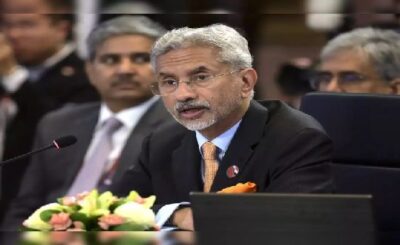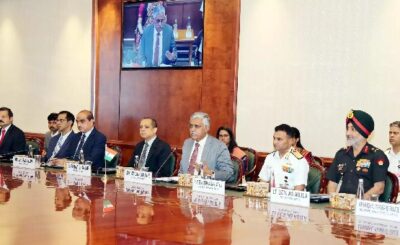EDITORIAL
Indian Space Research Organisation (ISRO) chairman S. Somanath visited Space Staqrt-up Skyroot Aerospace’s MAX-Q headquarters on Wednesday. During his visit, he was briefed on the developments of the Vikram-I launch vehicle, which is expected to conduct its maiden launch in the third quarter of 2024.
In a tweet, Skyroot Aerospace said “Proud to welcome @isro Chairman S. Somanath to our MAX-Q facility!” “We gave him a factory tour and showcased Vikram-1 hardware, and discussed our upcoming orbital launch”, it said, sharing photos of Mr Somanath’s visit to the facility.
Having emerged as a leader in India’s space industry, the company made headlines last year when it successfully launched Vikram-S, South Asia’s first privately developed rocket, signalling a new era for space exploration in the region.
During his visit, Somanath was given an extensive tour of the MAX-Q facility, where he was introduced to the Vikram-1 hardware. This next-generation rocket is part of Skyroot’s ambitious plan to develop and launch a series of small-lift launch vehicles tailored for the burgeoning small satellite market. The discussion also touched upon Skyroot’s upcoming orbital launch.
Skyroot successfully test-fired the second stage engine of its Vikram-1 space launch vehicle, named Kalam-250 in March this year.
The test was conducted at the spaceport of Sriharikota on March 27, 2024. The Thiruvananthapuram-based Vikram Sarabhai Space Centre (VSSC) provided a proprietary head-mounted safe arm (HMSA) device for the test, ensuring the rocket stage’s safe operation.
The solid propellant used in the Kalam-250 was processed at Solar Industries’ unique facility in Nagpur.
ISRO said the SDSC-SHAR Sriharikota facilitated the static test of the S2 motor of Kalam-250 Rocket designed and developed by an Indian Space start-up M/s Skyroot Aerospace, Hyderabad at SDSC’s propulsion testbed.
The test was enabled by IN-SPACe. “Leveraging expertise and infrastructure, SDSC SHAR offered a comprehensive technical assessment and feasibility study, selecting the 6A-High Capacity test bed for the test execution. VSSC/ISRO provided its in-house developed head-mounted safe arm (HMSA) for the test, essential for ensuring the safe operation of the rocket stage”, it said.
Upon receipt of the test article, rigorous evaluations were conducted, including Nondestructive Testing (NDT) to ensure motor integrity. Meticulous integration activities followed the motor alignment, in-situ thrust calibration, and Flex Nozzle Control (FNC) Actuation trials on the test bed. An extensive array of instrumentation systems, comprising approximately 196 measurements across various parameters such as thrust, pressure, strain, temperature, heat flux, acoustics, vibration, displacement, and pyrotechnics, were executed.
SDSC-SHAR support included post-fire quenching systems, high-speed photography, and video capture, ensuring a comprehensive test environment. On March 27, 2024, after rigorous technical reviews and clearances, the test was successfully conducted. All testbed systems, including instrumentation, performed within normal parameters, affirming the safety and efficacy of the test.
In adherence to the provisions of the MOU and Joint Project Implementation Plan (JPIP), digital data, including high-speed camera images, were furnished to M/s. Skyroot Aerospace to enable upcoming orbital space launch. This support underscores ISRO’s commitment to fostering technological advancements and facilitating innovative endeavors by non-governmental entities in the aerospace domain.
Previously, Skyroot had successfully tested the Kalam-100, the third stage of Vikram-1, in June 2021








